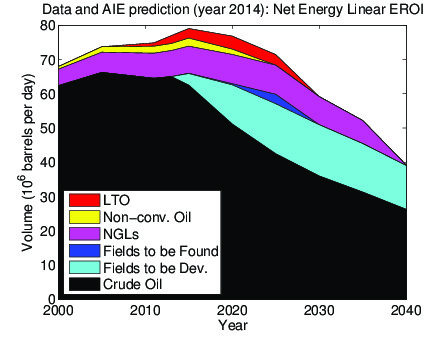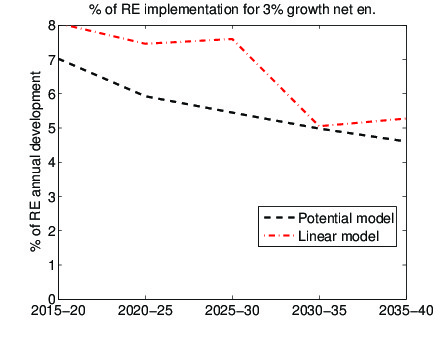Scientific article “Renewable Transitions and the net energy from Oil liquids: a scenarios study” published in the Renewable Energy Journal
MEDEAS partner team of ICM-CSIC have recently published a paper entitled: ‘Renewable Transitions and the net energy from Oil liquids: a scenarios study’ in the Renewable Energy Journal.
We use the concept of Energy Return On energy Invested (EROI) to calculate the amount of the available net energy that can be reasonably expected from World oil liquids during the next decades (till 2040). Our results indicate a decline in the available oil liquids net energy from 2015 to 2040. Such net energy evaluation is used as a starting point to discuss the feasibility of a Renewable Transition (RT). To evaluate the maximum rate of Renewable Energy Sources (RES) development for the RT, we assume that, by 2040, the RES will achieve a power of 11 TW (1012 Watt). In this case, by 2040, between 10 and 20% of net energy from liquid hydrocarbons will be required. Taking into account the oil liquids net energy decay, we calculate the minimum annual rate of RES deployment to compensate it in different scenarios. Our study shows that if we aim at keeping an increase of 3% of net energy per annum, an 8% annual rate of RES deployment is required, these rates of RES development are also compatible with the IEA forecasting of 5% RES mean growth for the next 5 years. We have also commented on the possible negative feedbacks of the RT were the possibility of the oversupply of eventually unnecessary host products may lower RES prices and then discouraging life recycling of those metals, a situation that presently has trapped the emerging economies strongly dependent on commodities. On the other hand, the environmental impact associated to the extraction and processing of huge quantities of raw material, can be translated, in the best case, into an increase of GHG emissions exceeding the benefits of the RT savings, and in the worse cases, into an increase of highly poisoning heavy metals and radioactive elements.

The figures presented in this work should be taken as optimistic/conservative estimates about the needs for a future RT; actual required rates of deployment and energy needs can be significantly greater that those presented here if other factors are properly accounted.
Our results point out the urgent necessity of a determined policy at different levels (regional, national and international) favoring the RT implementation in the next decades.

- Jordi Solé
- Antonio García-Olivares
- Antonio Turiel
- Joaquim Ballabrera-Poy
